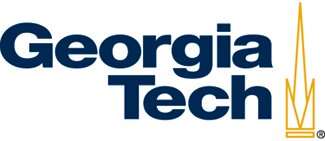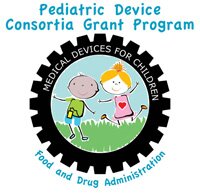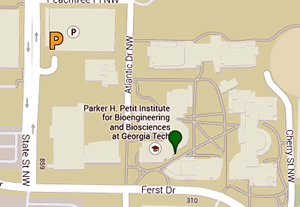In addition to seed grant funding, APDC provides assistance to inventors in the areas of technical, clinical, trial design, biostatistics, business planning, marketing, regulatory, legal and intellectual property. To request assistance in any of these areas, please complete a "Get Started" form.
5th Annual Pediatric Device Innovation Competition
*The application process for the 5th Annual Pediatric Device Innovation Competition is now closed
Look for our next call for poposals in the fall of 2016*
First round winners will be invited to make oral presentations of their projects on the Virginia Commonwealth University campus in Richmond, VA on October 21, 2015. (Please note, you can receive seed grant funding from only one of the seven national pediatric device consortia.)
Request for Applications for Seed Grant Funding
The Atlantic Pediatric Device Consortium (APDC) is pleased to announce its 5th annual Pediatric Device Innovation Competition. This seed grant competition is an opportunity for the scientific and business community including entrepreneurs, clinicians, scientists, businesses, academic researchers and medical and engineering graduate and undergraduate students, to develop and commercialize a pediatric medical device.
The APDC is an FDA funded consortium based out of Georgia Tech (PI: David Ku), Emory University (co-PIs: Wilbur Lam, Kevin Maher), Children’s Healthcare of Atlanta, and Virginia Commonwealth University (co-PI: Barbara Boyan) that provides a national platform to translate medical device ideas from concept to commercialization. APDC’S mission is to enhance the lives of children through the development of novel pediatric medical devices, which are both safe and effective. The consortium provides an environment of creativity, where ideas are reviewed, tested, and developed. (For the FDA definition of a medical device, please see Note 1 below.)
The application for seed grant funding begins with a written proposal, submitted to the APDC Innovation Competition Review Committee. Proposals are due on September 18, 2015, and selected investigators will be notified by September 30, 2015, of their selection for participation in the next round of the competition.
The second round is an opportunity for selected investigators to make a 5 minute oral presentation of their proposed idea/concept, to the review committee, an audience of peers, and the engineering and medical community in attendance. The investigators will be given advice on market size, product development, and regulatory submissions. Proposal presentations will be held on the Virginia Commonwealth University campus (in Richmond, VA) on October 21, 2015.
Your proposal will be seen by a number of different reviewers. Should you be invited back for the second round of competition, you will be presenting to an audience of your peers as well. As such, you should not plan to disclose confidential information on your invention.
Key Dates
Proposal submission deadline: September 18, 2015
Notification of second round presenters: September 30, 2015
Project presentation for invited investigators: October 21, 2015
Notification of award: November 15, 2015
General Guidelines
Eligibility
APDC is seeking proposals from inventors in the medical community who have medical device concepts or ideas for use with pediatric patients. Proposals should address a significant pediatric problem with device ideas ready to progress from an initial concept that addresses an unmet need to a commercially viable product.
The proposal should be directed towards development of a commercializable product, not research of a scientific concept. Issues such as prototyping, manufacturing, marketing, and regulatory clearance will be paramount and should be addressed explicitly.
Proposal Format
Proposal Page limit: 5 pages total
Font size: 11-12 point
Margin: 0.5 inches
Application should include:
1. Cover page (1 page) with the following information:
- Title of Project
- Applicant Name(s), Titles, Email Addresses
- Company, Institution, or School and Department
- Notification address
- Requested Award Amount (please note that indirect costs are not allowed)
- Abstract – A short executive summary
2. Description of proposed project following the outline provided below (3 page maximum). Applications are generally for one year of funding.
- Unmet need in pediatric care
Describe the clinical application/situation/condition that the project is to address. Estimates of the number of potential patients that would benefit and patient characteristics should be included such as: age range, weight, etc.
- Idea/Concept
Describe the pediatric medical device concept or idea that will be developed with seed grant funding.
- Significance
Describe the benefits the project will have on the technologies, treatments, services, or preventative interventions that relate to improvement in pediatric healthcare.
- Approach/Milestones:
Identify the current state of development of your device (concept, prototype, preclinical, clinical, manufacturing, marketing or commercial use) and describe your approach for moving it through the next few phases with seed grant funding for which you are applying. Specify the current status of your intellectual property.
- Product marketing plans
Describe your market analysis to date.
- Project team, resources and environment
Describe your project team and the resources you will require to complete the work proposed.
3. Budget & Budget Justification (1/2 page):
Provide an itemized budget for funds requested. Prototype production, data collection and analysis, clinical and pre-clinical studies, testing, manufacturing costs, cost of consultants, quality systems development, materials, and personnel support are eligible budget categories. Grants are expected to range from $5,000 to a maximum of $50,000 for one year.
4. References (1/2 page):
References and citations may be used in support of the description of the proposed project, but should be kept within the page limit.
Review Process and Scoring Criteria
Scoring by the APDC Innovation Competition Review Committee will be based on an assessment of the following factors: 1) clinical significance of the pediatric device, 2) approach to product development, 3) likelihood for marketing success, 4) project team, environment, and resources, and 5) potential for additional funding.
This seed grant funding is intended to promote the commercialization of a medical device for pediatrics. The application should include a description of the long term funding strategy.
The success of the seed grant program will be measured by advancement through the product development progress, generation of intellectual property, clinical trials progress, steps toward FDA approval, follow-on funding, and clinical impact.
Publications arising from a grant funded by this program are required to acknowledge APDC as the source of funding.
Awardees will be required to submit three quarterly progress reports and a final report. This information will be used in APDC’s updates to the FDA and must be submitted in a timely fashion. Investigators that do not submit this report will be ineligible for future funding via this mechanism.
Applicants must be up to date with, or able to obtain Institutional Review Board (IRB) or Institutional Animal Care and Use Committee (IACUC) approval for work proposed, if applicable. APDC will work with investigators to obtain an umbrella agreement through the Georgia Institute of Technology and/or an FDA IRB Reliance Agreement before any research involving animal or human subjects begins. Any additional relevant certifications (FWA numbers, CITI certifications, etc.) must be made available upon request.
Competitive Renewals
In rare cases, competitive renewals may be considered based on progress of the previously funded project. Investigators may request an informal review before submission of a renewal application.
Prior recipients of APDC seed grant funding should include a comparison of progress against original milestones in the seed grant application. This should include a summary of the work, publications and presentations and funding applied for and/or received (a 6th page).
Submission and Questions
Innovation Competition Applications must be submitted directly to the program via the web and do not need institutional sign-off at this phase of the competition. (i.e. will not need to go through the GT Office of Sponsored Programs (OSP)).
Applications should be submitted as a single WORD document through this online system.
Late submissions will not be accepted. Please submit by September 18, 2015.
Technical questions regarding the program may be addressed to Martha Willis.
Note 1:
The FDA defines a medical device as "an instrument, apparatus, implement, machine, contrivance, implant, in vitro reagent, or other similar or related article, including a component part, or accessory which is:
· recognized in the official National Formulary, or the United States Pharmacopoeia, or any supplement to them,
· intended for use in the diagnosis of disease or other conditions, or in the cure, mitigation, treatment, or prevention of disease, in man or other animals, or
· intended to affect the structure or any function of the body of man or other animals, and which does not achieve any of its primary intended purposes through chemical action within or on the body of man or other animals and which is not dependent upon being metabolized for the achievement of any of its primary intended purposes."
Note 2:
The FDA recommended age ranges for pediatric subpopulations:
Neonates - from birth through the first 28 days of life.
Infants - 29 days of age to less than two years of age
Children - Two years of age to less than 12 years of age
Adolescents - 12 years of age through 21 years of age
Transitional Adolescent, 18 to 21 years






